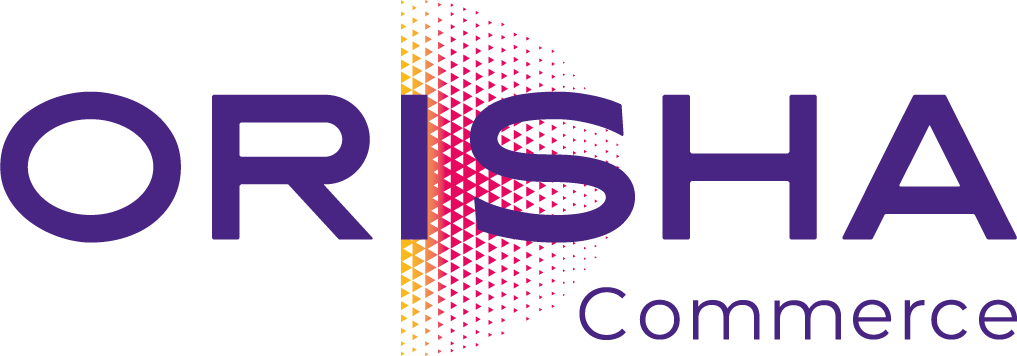Customer loyalty tools: how unified commerce transforms the relationship between brands and their customers

In today’s competitive and unpredictable market, fostering customer loyalty is a significant challenge for retail businesses. Traditional methods are proving inadequate in meeting the high service expectations of modern consumers. Unified commerce has emerged as a strategic response, seamlessly connecting all touchpoints, ensuring a consistent customer experience, and fundamentally transforming loyalty tools.
This article examines how unified commerce is revolutionizing loyalty programs by offering practical solutions to boost customer engagement and maximize retention. Learn how our CRM assists retailers in interacting with their customers through centralized data, personalized strategies, and customized loyalty programs.
Unified commerce and customer loyalty
Definition
Unified commerce empowers businesses to manage all sales channels through a single platform. Unlike omnichannel strategies that focus on channel consistency, unified commerce integrates infrastructure to consolidate customer, product, order, inventory, and promotion data in real-time.
By centralizing this data, businesses obtain a comprehensive and updated view of the customer journey across all channels. This results in a seamless experience with more consistent and personalized interactions, allowing loyalty actions to be harmonized throughout the network. Interoperable and scalable tools facilitate this unification.
Openbravo Commerce Central enhances the efficiency of unified commerce operations, enabling precise management of both physical and digital channel activities from one central system, thereby improving operational effectiveness.
The importance of customer loyalty
Today’s consumers are surrounded by countless commercial offers, making 360° customer loyalty a strategic priority. Retaining existing customers is more cost-effective than acquiring new ones, especially since loyal customers tend to recommend the brand, tolerate occasional mishaps, and contribute to product development.
Loyalty hinges on a brand’s ability to build lasting relationships through recognition, personalization, and trust. These relationships are nurtured through interactions both online and in-store.
For retail businesses, customer retention means securing long-term revenue. In a volatile market with rapidly changing expectations, a loyal customer base helps stabilize traffic fluctuations and provides valuable qualitative data.
Customer loyalty tools
Integrated technologies in loyalty tools
The integration of advanced technologies is revolutionizing loyalty tools. Artificial Intelligence, in particular, enables the analysis of massive volumes of customer data from various touchpoints, ensuring personalized interactions and accurate demand forecasts.
CRM tools, connected to all sales and communication channels, centralize transactional, behavioral, and contextual customer data. This information drives precise loyalty strategies such as dynamic product recommendations, targeted campaigns, and personalized rewards based on purchase history.
Digital wallets and dematerialized loyalty cards simplify the activation of loyalty benefits both online and in-store. Customers can:
- Accumulate points;
- View their benefits;
- Utilize discounts;
- Receive product offers via an application.
Certain tools also incorporate referral mechanisms, promoting loyalty while growing the customer community through recommendations.
The connectivity between tools facilitates intelligent automation of customer loyalty, with specific actions automatically triggered after a purchase, store visit, or online interaction.
Chatbots and their role in customer engagement
Available around the clock, chatbots ensure uninterrupted service across all digital channels, guiding customers through their brand experience, from information search to after-sales support. They automate responses to common queries, enhancing customer service quality. By accessing real-time customer data, chatbots can tailor responses according to user profiles, including:
- Loyalty status;
- Purchase history;
- Product preferences;
- Location.
For example, a loyal customer may receive personalized advice or exclusive offers immediately upon starting a conversation.
Chatbots also enhance customer engagement by facilitating interactions. They can initiate proactive dialogues, such as:
- Notifying customers of loyalty benefits;
- Reminding them of abandoned carts;
- Recommending complementary products.
Chatbots are progressively adopting hybrid formats, blending conversational Artificial Intelligence with human support for enhanced personalization of customer relations.
Orisha Commerce provides robust CRM tools for retailers, designed to centralize customer data and activate loyalty mechanisms. Businesses can segment their customer base, personalize interactions, and initiate targeted campaigns. Explore our CRM and loyalty tools!
Personalized strategies for an enhanced customer experience
The impact of customer data on the buying journey
Unified commerce revolves around centralizing data from all channels to craft a seamless customer journey. Every interaction is logged into a database, allowing real-time adaptation of marketing efforts.
For instance, if a customer spots a product on the website but doesn’t finalize the purchase, a push notification can remind them of their choice upon visiting a store. Similarly, a loyal customer might get offers tailored to their shopping habits after scanning their loyalty card at checkout. These interactions are viable only when customer information is unified and accessible throughout their journey.
Centralized data also aids in customer segmentation and anticipating needs. A repeat high-end product buyer can be shown premium recommendations, while a promotion-sensitive customer may receive personalized alerts from the brand.
Openbravo Commerce Central provides retail brands with an integrated tool specifically for managing orders. By accessing real-time purchase histories, businesses can activate rewards and strengthen customer relationships. Explore how our CRM tool enhances unified commerce operations!
Innovative loyalty programs
Example 1: Loyalty through two programs
Lululemon, a yoga clothing brand, offers two loyalty programs: a free program that grants customers services like effortless returns, free hemming, and online courses; and a paid program that provides members with a 10% discount and unlimited access to Peloton fitness classes. This structure creates significant perceived value and strengthens synergies between the two brands through their communities.

Example 2: Transactional customer loyalty
Nature & Découvertes’ paid loyalty program offers customers substantial benefits, including product discounts, gift vouchers, free annual delivery, extended warranties, and rewards for every €100 spent. By emphasizing immediate and recurring benefits, the company fosters continuous customer engagement through a transactional approach.
Example 3: Loyalty based on emotion
Sephora’s loyalty program features a three-tier structure where each product purchase elevates the customer’s status. Instead of mere benefits, the program offers emotional privileges that enhance customer attachment to the brand, such as personalized services, birthday surprises, and exclusive access. The highest tier symbolizes this approach, focusing on emotional rewards and a deeper connection.
Example 4: Environmentally aligned customer loyalty
Beyond its standard loyalty program, L’Occitane has introduced an experimental initiative in Hong Kong: the #MEGA Program. This program rewards customers’ eco-friendly actions with loyalty points, reflecting a value-based loyalty strategy.
Example 5: Community engagement-based loyalty
Adidas redefines customer loyalty as a lifestyle. Club members accumulate points through purchases, using the Adidas Running app, or engaging in Adidas Runners community events. This four-tier program appreciates customers’ physical activities alongside product purchases, offering benefits at higher levels such as access to concerts, sporting events, or meetings with athletes.
Measuring tool performance and future opportunities
Evaluating customer retention rates
Unified commerce simplifies tracking loyalty tools by providing a current view of customer behavior throughout their journey, making it easier to identify engaged segments and retention drivers.
For instance, a customer who frequently shops online but stops visiting in-store can be flagged through data synchronization, triggering targeted actions such as personalized follow-ups, store visit incentives, or location-based offers. On the other hand, a loyal multichannel customer can receive differentiated treatment with tailored rewards.
Additionally, unified CRM platforms can cross-reference customer retention rates with indicators like purchase frequency, average basket size, or acquisition cost, ensuring a clearer understanding of loyalty program ROI.
Anticipating market trends and evolutions
By 2025, most consumers will embrace hybrid buying journeys, blending digital channels with physical points of sale. This trend is notably prevalent among Generation Y (48%) and affluent demographics (46%). Consumers are looking for seamless omnichannel experiences and personalized deals, remaining sensitive to financial perks like vouchers, discounts, and free delivery. However, Generation Z shows a stronger preference for exclusive services and VIP access.
Furthermore, transparency and societal engagement become crucial loyalty factors. More consumers are choosing environmentally friendly products, with 64% stating sustainable practices influence their purchasing decisions. They expect companies to share their values and engage actively in social or environmental causes.
Ultimately, customers seek consistent experiences across all interactions, whether online, in-store, or via mobile apps. Unified commerce delivers on this expectation by ensuring continuity throughout the customer journey, which is vital for sustaining long-term engagement and loyalty.
Unified commerce redefines customer loyalty by providing businesses with consistent, personalized, and continuous experiences across all touchpoints. Through data centralization, it becomes a strategic tool for boosting engagement. The most effective loyalty tools now align with consumer values and adapt to new hybrid journeys that integrate physical and digital experiences. In a competitive market, this capability to unify the customer experience is crucial for turning each interaction into a lasting relationship.
Frequently asked questions
What are the current trends in customer loyalty?
Current trends in customer loyalty include the rise of personalized programs based on behavioral data analysis. Businesses are increasingly utilizing integrated CRMs, omnichannel strategies, gamification, exclusive services, and fostering a responsible engagement.
Which indicators should be tracked to measure the effectiveness of loyalty tools?
Key indicators to track include retention rate, purchase frequency, customer lifetime value, loyalty benefit usage rate, reactivation rate of inactive customers, and feedback and satisfaction surveys. Cross-analyzing this information is made possible through a centralized CRM platform, enabling real-time adjustments.
How can a customer loyalty program be adapted to unified commerce?
Adapting a loyalty program to unified commerce requires integrating it across all sales and customer interaction channels, centralizing data within a unified CRM platform. This approach facilitates real-time tracking of customer behavior, personalized rewards, and provides a seamless experience between digital and physical channels.




